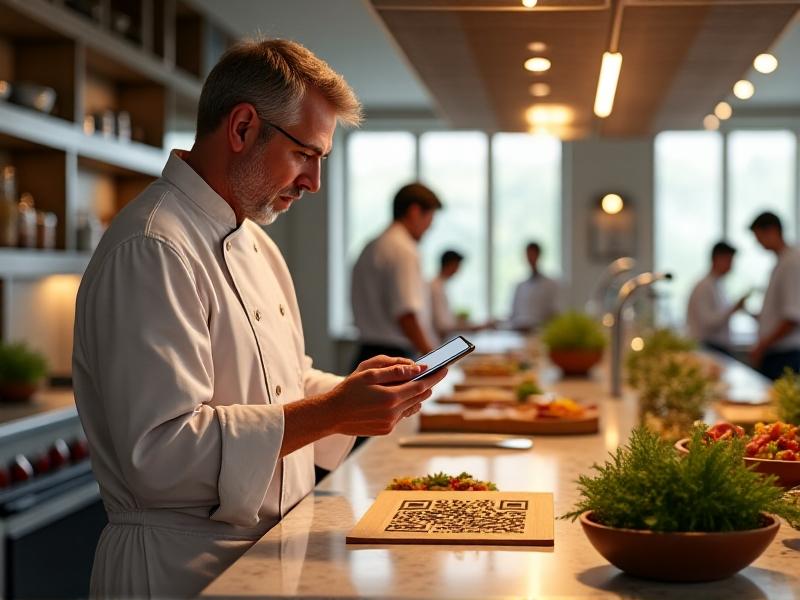Establishing Traceability Standards in Chef-Forager Supply Chains
The Importance of Traceability in Chef-Forager Supply Chains
Traceability has become a cornerstone in modern supply chains, especially in the culinary world where chefs and foragers collaborate to bring unique, high-quality ingredients to the table. Establishing traceability standards ensures that every step of the supply chain is transparent, from the moment an ingredient is foraged to its final presentation on a chef’s plate. This transparency not only builds trust with consumers but also enhances food safety, sustainability, and ethical sourcing practices.
In the chef-forager relationship, traceability is particularly crucial. Foragers often source rare, wild, or seasonal ingredients that are not available through conventional channels. Without proper traceability, it becomes challenging to verify the origin, quality, and handling of these ingredients. This can lead to issues such as contamination, mislabeling, or even the depletion of endangered species. By implementing traceability standards, chefs and foragers can ensure that their ingredients are responsibly sourced and handled with care.
Moreover, traceability fosters a deeper connection between chefs, foragers, and consumers. When diners know the story behind their meal—where it came from, who harvested it, and how it was prepared—they are more likely to appreciate the value of the dish. This connection not only enhances the dining experience but also supports local economies and sustainable practices. In a world where consumers are increasingly conscious of their food choices, traceability is no longer a luxury but a necessity.

Challenges in Establishing Traceability Standards
While the benefits of traceability are clear, establishing standards in chef-forager supply chains is not without its challenges. One of the primary obstacles is the lack of uniformity in how traceability is implemented across different regions and industries. Foragers may operate in remote areas with limited access to technology, making it difficult to document and track their harvests. Additionally, chefs may work with multiple foragers, each using different methods of record-keeping, leading to inconsistencies in the data collected.
Another challenge is the cost associated with implementing traceability systems. For small-scale foragers and independent chefs, the investment in technology, training, and infrastructure can be prohibitive. This is particularly true for those who rely on traditional methods of foraging and may not have the resources to adopt modern tracking tools. Without financial support or incentives, these stakeholders may struggle to comply with traceability standards.
Furthermore, there is the issue of trust and collaboration between chefs and foragers. In some cases, foragers may be hesitant to share detailed information about their harvests, fearing that it could be used to exploit their knowledge or resources. Conversely, chefs may be skeptical of the authenticity of the ingredients they receive, especially if they cannot verify their origins. Building a relationship of mutual trust and transparency is essential to overcoming these challenges and establishing effective traceability standards.

Technological Solutions for Traceability
Technology plays a pivotal role in overcoming the challenges of traceability in chef-forager supply chains. One of the most promising solutions is the use of blockchain technology. Blockchain provides a decentralized and immutable ledger that can record every transaction and movement of an ingredient from the forager to the chef. This ensures that the data is secure, transparent, and easily accessible to all stakeholders. For example, a forager can upload details about their harvest, such as the location, date, and quantity, to a blockchain platform. The chef can then access this information in real-time, verifying the authenticity and quality of the ingredients.
Another technological advancement is the use of QR codes and RFID tags. These tools allow for quick and easy tracking of ingredients throughout the supply chain. A QR code can be attached to a batch of foraged herbs, for instance, and scanned at various stages of the supply chain to update its status. This not only streamlines the tracking process but also provides consumers with a way to trace the journey of their food. By scanning a QR code on a menu or packaging, diners can access detailed information about the ingredient’s origin, the forager who harvested it, and the chef who prepared it.
Mobile applications and cloud-based platforms are also making it easier for chefs and foragers to collaborate and share information. These platforms can be used to document harvests, track shipments, and communicate in real-time. For example, a forager can use a mobile app to log their daily harvests, while a chef can use the same app to place orders and receive updates on the status of their ingredients. By leveraging these technological solutions, chefs and foragers can enhance transparency, efficiency, and trust in their supply chains.

The Role of Certification and Regulation
Certification and regulation are essential components of establishing traceability standards in chef-forager supply chains. Certifications, such as organic, fair trade, or wild-crafted, provide a way for foragers and chefs to demonstrate that their ingredients meet specific quality and ethical standards. These certifications often require rigorous documentation and auditing processes, which can help ensure that traceability is maintained throughout the supply chain. For example, a forager seeking organic certification must provide detailed records of their harvests, including the location, methods, and handling practices. This documentation not only supports traceability but also builds consumer trust in the product.
Regulations, on the other hand, provide a legal framework for traceability. Governments and industry organizations can establish guidelines and requirements for how ingredients should be tracked and documented. For instance, the European Union’s General Food Law requires that all food and feed businesses implement traceability systems to ensure the safety and transparency of their products. Similar regulations can be applied to chef-forager supply chains, mandating that foragers and chefs maintain detailed records of their ingredients and make this information available to consumers.
However, it is important to strike a balance between regulation and flexibility. Overly stringent regulations may burden small-scale foragers and chefs, making it difficult for them to comply. Instead, regulations should be designed to support and incentivize traceability, rather than impose unnecessary barriers. For example, governments could offer grants or tax incentives to foragers and chefs who invest in traceability systems. By combining certification and regulation with supportive measures, stakeholders can create a more transparent and sustainable supply chain.
Building Consumer Trust Through Transparency
Transparency is key to building consumer trust in chef-forager supply chains. When consumers have access to detailed information about the ingredients in their meals, they are more likely to feel confident in their choices and support the businesses that provide them. This transparency can be achieved through various means, such as providing detailed menus, sharing stories about the foragers and chefs, and offering traceability tools like QR codes or blockchain platforms.
One effective way to enhance transparency is through storytelling. Chefs and foragers can share the journey of their ingredients, from the wild landscapes where they were harvested to the creative process of preparing them in the kitchen. This not only adds value to the dining experience but also highlights the unique qualities of the ingredients and the expertise of the people behind them. For example, a chef could create a video series featuring interviews with foragers, showcasing their passion and dedication to sustainable harvesting practices.
Another way to build trust is by engaging with consumers directly. Chefs and foragers can host events, such as foraging tours or cooking classes, where consumers can learn more about the ingredients and the people who bring them to the table. These interactions provide an opportunity for consumers to ask questions, share feedback, and develop a deeper appreciation for the food they eat. By fostering a sense of community and connection, chefs and foragers can create loyal customers who value transparency and sustainability.
The Future of Traceability in Chef-Forager Supply Chains
As the demand for transparency and sustainability continues to grow, the future of traceability in chef-forager supply chains looks promising. Advances in technology, such as blockchain, AI, and IoT, are expected to play a significant role in enhancing traceability and making it more accessible to all stakeholders. For example, AI could be used to analyze data from foragers and chefs, identifying patterns and trends that can improve efficiency and sustainability. IoT devices, such as sensors and GPS trackers, could provide real-time monitoring of ingredients, ensuring that they are handled and transported with care.
Collaboration will also be key to the future of traceability. Chefs, foragers, consumers, and policymakers must work together to establish standards and practices that benefit everyone. This could involve creating industry-wide guidelines, sharing best practices, and supporting initiatives that promote transparency and sustainability. For example, a consortium of chefs and foragers could be formed to develop a certification program specifically for wild and foraged ingredients, ensuring that they meet high standards of quality and ethical sourcing.
Ultimately, the future of traceability in chef-forager supply chains will depend on the commitment of all stakeholders to prioritize transparency, sustainability, and consumer trust. By embracing new technologies, fostering collaboration, and sharing their stories, chefs and foragers can create a supply chain that is not only traceable but also resilient and innovative. In doing so, they can ensure that the unique and valuable ingredients they bring to the table are celebrated and preserved for generations to come.





